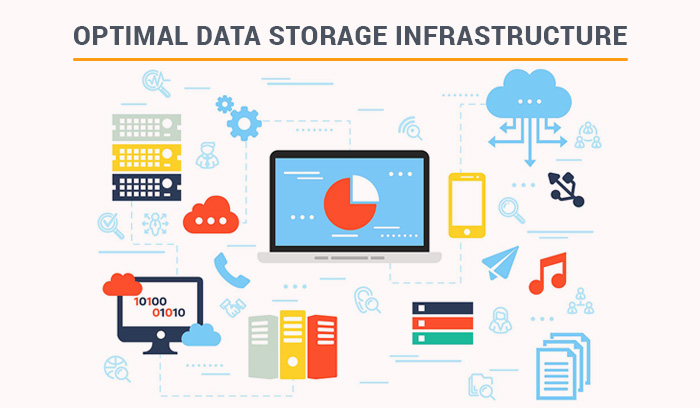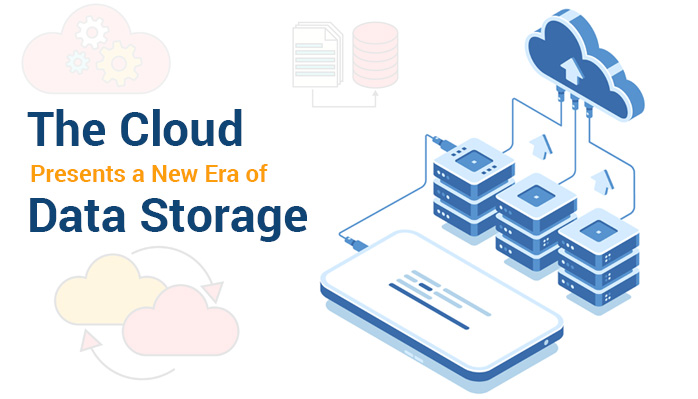Cloud ServicesIT Consulting & StrategyTech Support & Managed IT ServicesConstructionEducationFinanceHealthcareLegalReal Estate
Technologies like the Internet of Things (IoT), mobile technology, data analytics, and others are creating a radical increase in business data volumes. Some studies, like this one from IDG, show the volume of recorded data increasing as much as 30% to 40% per year.
Most businesses inevitably face the question — where and how is the best way to store all this data? First, you should get a handle on your business needs. How does your business currently use its data? Are there ways that you feel it could extract greater value from its data in the future?

The truth is that there’s no “one-size-fits-all” approach to storing data, and as such, the experts at Manhattan Tech Support take a vendor-agnostic approach to the specific needs of each individual client. We start with a thorough analysis of your company data, files, and applications, then develop a solution for your business that’s specifically tailored to its needs.
To provide some clarity on our process, let’s first look at the most popular data storage technologies, and how they contribute to a successful overall storage strategy.
Traditional On-Premise Data Storage
Buying storage appliances, installing them in your server room, and then having your IT staff maintain them has been the standard way to store company data for decades. Despite the increased focus on the cloud as the preferred storage platform for business, there are many scenarios where on-premise storage is still the smartest solution.
The advantages of on-site data storage
- Providing Maximum Security
On-premise storage excels in applications that demand maximum data security and assurance. By minimizing 3rd party access to sensitive customer information, financial data, intellectual property, and more – on-premise storage provides the highest level of physical data security, bar none.
- Better Handling of Large Files and Data
Industries such as media, entertainment, and scientific research can produce files that are gigabytes – or even terabytes – in size. Transferring these files to the cloud wastes valuable time — oftentimes hours for a single file — meaning they’re much more efficiently stored on on-premise systems.
- Regulatory Compliance
Organizations that have strict regulatory compliance needs will likely be attracted to keeping sensitive data on-premise. On-premise systems simplify compliance by limiting the number of parties and jurisdictions that have access to your data. They’re also easier to configure to meet the compliance requirements around new services or infrastructure changes.
Disadvantages of on-premise systems
- High upfront cost
Purchasing storage devices requires a large capital expenditure, which is accompanied by additional maintenance and IT staffing costs. At some organizations, especially those with significant data storage requirements, these costs can be an obstacle to the creation of an optimal data storage environment.
- Lack of Flexibility
On-premise requires careful capacity planning to make sure that the right amount of budget goes to the right hardware. Without careful planning, your business runs the risk of purchasing too much capacity or not enough. This can lead to low utilization rates or the need for major upgrades to keep up with the demand for more storage.
Have You Heard of Software-Defined Storage?
Software-defined storage (SDS) is a new development in technology that uses specialized software to abstract or “virtualize” storage resources from your underlying network hardware. This layer of virtualization allows you to achieve flexible, enterprise-grade data storage — including robust security, management, and automation — using generic off-the-shelf hardware. Want to know more about how your business can take advantage of SDS, we’d be happy to explain how.
The Cloud Presents a New Era of Data Storage
Cloud computing has had a transformative impact on the storage industry, providing businesses with a new level of accessibility and ease. These benefits have driven strong growth in cloud storage for over a decade. What do people love about the cloud?
Advantages of cloud storage
- Controlled Costs and Easier Budgeting
With cloud storage, your business can purchase as much or as little capacity as it needs on a flexible, month-to-month basis. That flexibility eliminates large expenditures on new storage infrastructure.
- Eliminates Storage Maintenance
Because all maintenance is handled by your cloud vendor, you never have to dedicate internal teams to maintain or upgrade storage equipment. By simplifying your on-premise infrastructure, cloud systems also help reduce your office footprint and lower your monthly power bills, a valuable benefit to companies in expensive cities like New York.
Disadvantages of cloud storage
- Speed and Latency
According to a survey by cloud storage company Nexsan, speed and latency are major barriers to successful cloud adoption, with 22% of companies citing it as a major concern. Minimizing these problems could take upgrading network or telecommunications infrastructure, erasing a portion of the cost savings normally associated with the cloud.
- Potentially High Lifetime Cost
While cloud storage lowers capital expenditure and smooths out monthly budgets, is it truly the cheapest option over the long term? In some cases, where large data storage needs are calculated over several years, it’s not. Determining whether the cloud is truly the best option will take careful analysis of your goals and the other available storage solutions.
In addition to these potential downsides, there are many other factors you should consider before putting your data in the cloud. What if your cloud storage provider gets acquired or goes out of business? Do you have a plan if you suddenly need to bring your data on-premise? These situations, and others like them, could cause significant disruption to your business operations and should get addressed with a thorough analysis and planning stage.
The Right Storage Strategy Will Combine All Available Technologies
This is not to say that the best solution is either totally on-premise or in the cloud. The reality is that most businesses will need to intelligently combine the two to fully address their data storage needs.
Many companies want to make data available to mobile and remote workers, for example. This data is best served by a cloud storage solution that facilitates the secure flow of data between users and teams. On the other hand, data that has high-performance standards — applications in the high-frequency trading field, for example — will want the fastest solid-state storage at an on-premise location. Organizations that need both these storage capabilities will need to intelligently integrate the two, or find a technical partner to help them do so.
The experts at Manhattan Tech Support have over 20 years helping small and midsized businesses in New York City combine the full range of data technologies to meet their unique needs. If you’re experiencing storage issues or think your storage systems could be better supporting your business goals, we invite you to reach out and ask us a question!
Our friendly team is available by either email at [email-address] or [sales-phone].



 July 22, 2019
July 22, 2019 Homefield IT
Homefield IT


